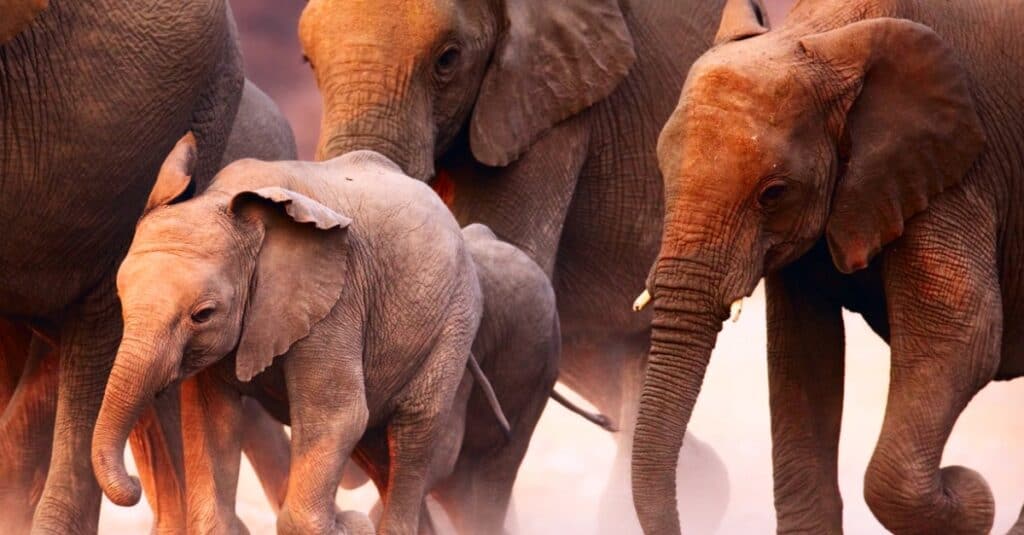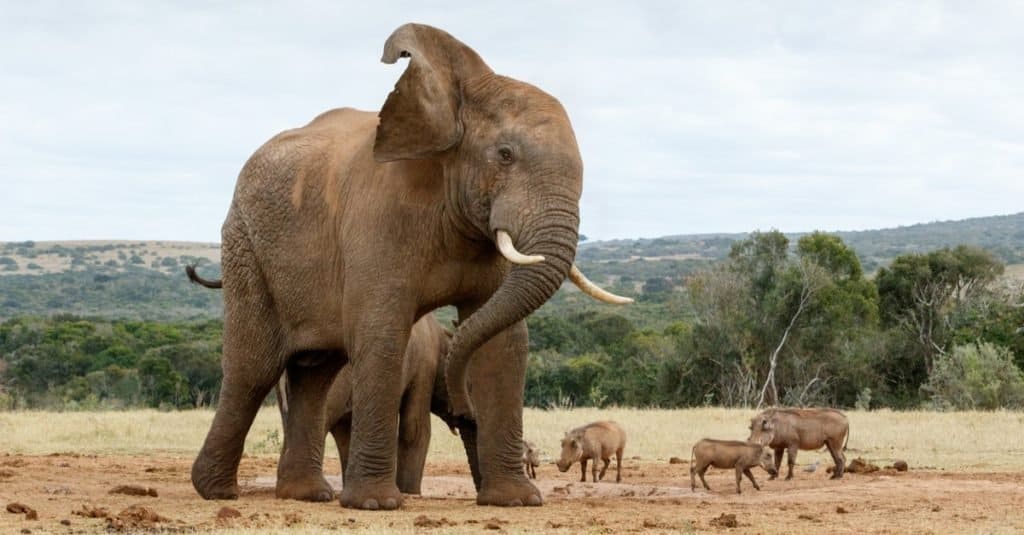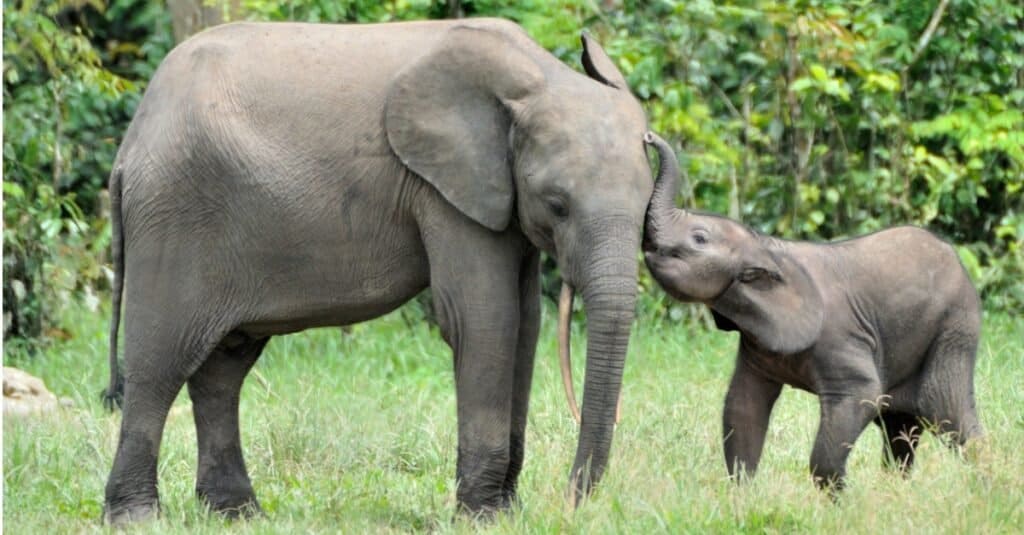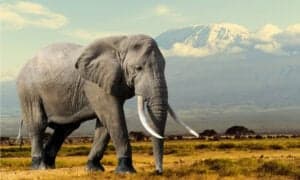If you were playing the original Trivial Pursuit game, the answer to “How many types of elephants are there?” would be two. But in 2000, scientists were able to analyze the DNA of the elephants and discovered that the African elephant that lives on the savanna and the African elephant that lives in the rainforest are actually two distinctly different species. So now the answer to your Trivial Pursuit question would be three!
How many species of elephants are alive today?

An elephant herd on the run.
©iStock.com/johan63
There are presently three species of elephants alive in the world today, there are:
- African bush elephant: The largest elephant species
- African forest elephant: The “newest” species of elephant that DNA evidence revealed to be a distinct species in 2000
- Asian elephant: Elephants that live across Asia and have significant physical differences versus African elephants
Now, you may have heard of other types of elephants as well. The Asian elephant has 3-4 (scientists are still debating the number) of subspecies that are subgroups of the Asian elephant. Let’s dive into the differences between each type of elephant!
Species #1: African bush elephant

An African bush elephant on the savanna.
©Bildagentur Zoonar GmbH/Shutterstock.com
The African bush elephant is the largest of the elephants and is characterized by large flappy ears that are the shape of Africa. They have long trunks and large white tusks. Compared to the African forest elephant, the savanna elephants have longer front legs compared to their back legs, their ears are bigger and their tusks are more curved and point outward. Another difference is they live in the savanna, as their name suggests, and eat mostly on grass.
Species #2: African forest elephant

An African Forest Elephant mother with her calf, at the Dzanga saline (a forest clearing) in the Central African Republic.
©iStock.com/USO
The African forest elephant is smaller than the savanna elephant and their ears are more oval shaped. They too have long trunks and large tusks but their tusks are straighter and point down. The tusks also have a pinkish tint which makes them more susceptible
to poachers. Forest elephants live in the rainforest where they can find lots of fruit, the main source of their diet. They also eat grass, leaves, seeds and tree bark.
Species #3: Asian elephant

An Asian elephant with a newborn.
©Mogens Trolle/Shutterstock.com
The Asian elephant is smaller than the African bush elephant and can be dark gray to dark brown and have depigmented skin (splotches of unpigmented skin). There are 3-4 subspecies of Asian elephants based on the regions they live in. One distinct difference between Asian and African elephants is the head of the Asian elephant is twin-domed, meaning it has a groove down the middle. Another difference is that only male Asian elephants can grow tusks whereas both male and female African elephants can have tusks. Looking at the three-four subspecies of Asian elephants here are some of the unique facts about each:
- Indian elephant: Most common Asian elephant with 26,000-30,000 left in Asia.
- Sri Lankan elephant: Largest subspecies in size weighing 4,000-12,000lbs.
- Sumatran elephant: These elephants have skin that is more universal in color and has less depigmented areas. They are smaller than the Indian and Sri Lankan elephants.
- Bornean elephant: Smallest Asian subspecies, sometimes called the Bornean pygmy elephant.
As we are able to do more research on each of these specifies and subspecies we can learn more about their habitats, diets and reproduction so that we can increase their numbers and get them off the endangered list. Each type of elephant has a critical role in contributing to their ecosystem and as humans we can help protect them so they can thrive again!
Types of Extinct Elephants

Wooly mammoths went extinct around 4,000 years ago.
©Dotted Yeti/Shutterstock.com
While there are only three remaining species of elephants today, up until just a few thousand years ago other elephants roamed the Earth. Let’s take a look at some types of elephants that recently went extinct.
- Mammoths: Mammoths were closely related to Asian elephants and are famous for roaming across the vast Eurasian steppe. Yet, mammoth species could also be found in North America, Africa, and Europe. The last surviving mammoth was the wooly mammoth, which is believed to have gone extinct about 4,000 years ago with a last population surviving on and island off Russia’s northern coast.
- Straight-Tusked Elephants: One straight-tusked elephant – Palaeoloxodon namadicus – may have been the largest land mammal to ever walk the Earth! Its estimated most straight-tusked elephants went extinct about 30,000 years ago. One species, which was a dwarf straight-tusked elephant that lived on Mediterranean islands – is believed to be the last surviving species and went extinct about 3,000 years ago due to human hunting.
The photo featured at the top of this post is © iStock.com/johan63
Thank you for reading! Have some feedback for us? Contact the AZ Animals editorial team.






